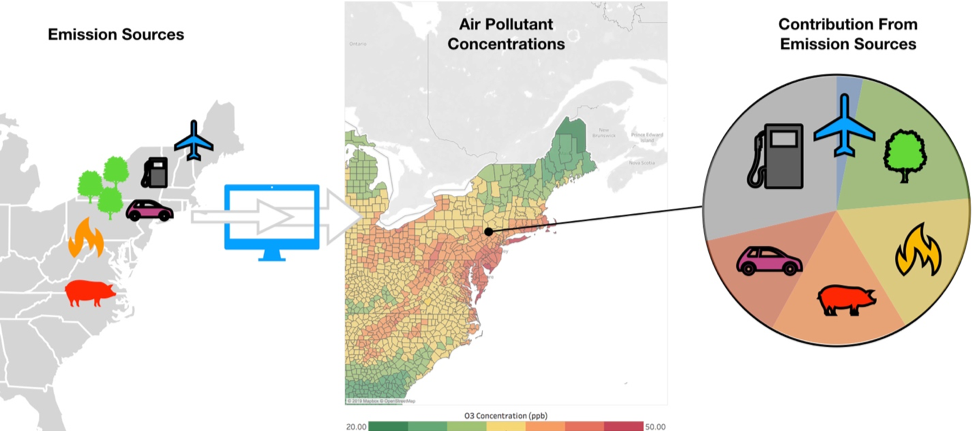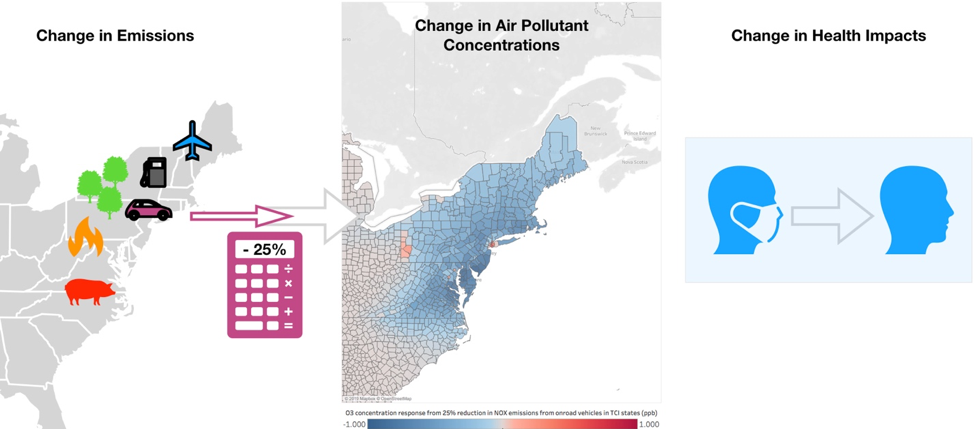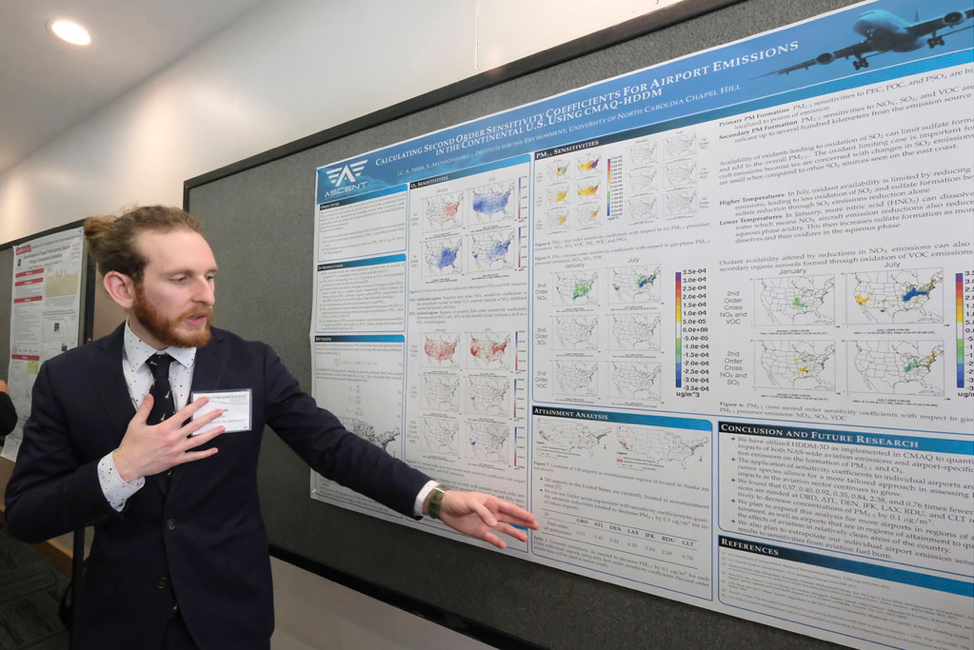By Calvin Arter
Calvin Arter is a Ph.D. student in the UNC Department of Environmental Sciences and Engineering and part of the Institute for the Environment’s Center for Environmental Modeling for Policy Development.
Understanding the Sources of Air Pollution
Approximately 4.2 million premature deaths occur globally each year due to outdoor air pollution.
Sources of air pollutants can be man-made, such as vehicle exhaust and other industrial sources like power plants, or natural in origin, such as smoke from wildfires. We often like to think of giant industrial stacks spewing clouds of dark smoke, but air pollutants can also be formed from small-scale activities such as starting a car or trees growing in a forest. Air pollutants can be directly emitted from a combustion source or emissions can undergo chemical and physical interactions in the atmosphere to indirectly form air pollutants.
Pollutant sources can also vary depending on the time of year and location. Understanding the factors that influence air pollutant formation is critical for developing emission reduction strategies that will result in reduced air pollutants and thus help attain health-based ambient air quality standards – a requirement for regions in the United States experiencing elevated air pollution levels. This is where air quality modeling comes in.
Air Quality Modeling
The goal of air quality modeling is to accurately estimate spatial and temporal air quality conditions by using a computer simulation to mimic real atmospheric chemical and physical processes. Inputs to the model include emission amounts from man-made and natural activities, as well as weather conditions. The model then estimates air pollutant concentrations by constraining the inputs to behave under approximations of physical and chemical laws representative of the actual atmosphere. Model results quantitatively show how individual emission sources contribute to air pollutant concentrations.

Our group at UNC’s Institute for the Environment, led by Dr. Sarav Arunachalam, takes this modeling framework one step further. We perform sensitivity analyses which quantify how sensitive the model’s outputs (air pollutant concentrations) are to the model’s inputs (individual emission sources).
Results from these analyses are defined as sensitivities, which can then be used to calculate the expected change in pollutant concentrations by modifying the amount of emissions from individual sources. This is an extremely powerful technique for modeling the expected impacts of policies aimed at reducing emissions from individual emission sources as a function of each emitted pollutant.

Prior studies in our group have applied these methods to answer questions such as:
- What are the carbon benefits and resulting health benefits of increased residential energy efficiency measures in the U.S.? [Levy et al, ERL 2016]
- What are the state-specific contributions to air quality – related health burden from residential combustion and power plants in the U.S.? [Penn et al, EHP 2017]
- What are the incremental contributions to air quality due to aircraft landing and takeoff operations from top airports in the U.S.? [Boone and Arunachalam, 2014]
My own research has been focused on using these methods to answer questions such as:
- How many fewer flights would be needed to reduce air pollutant concentrations near major airports such as Charlotte-Douglas International and Atlanta Hartsfield-Jackson?
- How has the change in aircraft activity across the entire U.S. from 2005 to 2015 impacted air pollution and the health of individuals living near airports?
We have recently begun the Transportation, Equity and Climate, and Health (TRECH) study that is a part of the Transportation Climate Initiative in collaboration with the Center for Climate, Health, and the Global Environment at the Harvard T. Chan School of Public Health and the Boston University School of Public Health, in which we will apply the methods discussed here to determine the air pollutant reductions and associated health benefits from policies aimed at mitigating climate impacts from the onroad transportation sector in the Northeast and Mid-Atlantic regions of the U.S.
Sensitivity analyses framework as implemented in the air quality model
These analyses as implemented in the air quality modeling framework are able to provide information and insights about potential real-world outcomes from policies aimed at reducing air quality impacts from individual emission sources. They help to provide an answer to: which policies could be implemented to start chipping away at that 4.2 million each year, perhaps one vehicle class at a time?
To learn more about the air quality modeling work underway at the Institute for the Environment please visit: https://ie.unc.edu/research/environmental-modeling/


